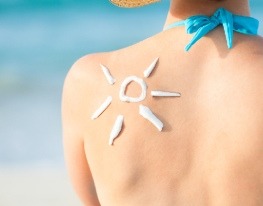About Us


Ultraviolet Radiation (UVR) is one of the sources if energy coming from the sun.
Sunprotection
Learn more about Ultraviolet Radiation (UVR)
Ultraviolet Radiation (UVR) is one of the sources if energy coming from the sun. Natural sunlight contains three types of Ultraviolet radiation – UVA, UVB and UVC
UVA rays cause skin ageing, wrinkles and contribute to skin cancer. UVA rays pass effortlessly through the ozone layer and makes up for 90% of our sun exposure.
UVB rays cause sunburns, cataracts, aggravate most connective tissue diseases and cal also lead to skin cancer. Most UVB rays are absorbed by the ozone layer, but enough of these rays pass through to cause serious damage. They make up for 10% of our sun exposure.
UVC rays are effectively blocked by the ozone layer and never reach us.
Approximately 2/3rd of the total daily UVR reaches the earth between 10 am and 2 pm. Each degree increase in latitude and every 1000 meters above sea level corresponds to 3% and 10% increase in UVR respectively.
Learn more about Sunscreens
Sunscreens are medicated agents that block the penetration of UVR by acting as filters and by reflecting the radiation. They do so without interfering in your comfort or activity level.
They can be Physical sunscreens like Calamine or Chemical sunscreens like avobenzone or titanium dioxide. Physical sunscreens provide better protection but Chemical sunscreens have better acceptability because they don’t leave a mask or paint on the skin.
Learn more about 'SPF'
SPF stands for Sun Protection Factor. An SPF 30 means you will need 30 times the UVR to produce a sunburn compared to skin that is not protected with sunscreen. The thicker the layer of sunscreen that is applied, the better is the protection obtained.
Waterproof sunscreens will provide protection for up to 40 minutes of water immersion. For longer periods of immersion, the sunscreen will have to be reapplied. Lighter skins require higher SPF. Newer sunscreens are now available in gels, sprays, emulsion and fluid-based formulas, which have an elegant matte finish.
Guidelines for sunscreen application
- For sunscreen to be effective, apply it evenly and generously 20-30 minutes before going outside
- Reapply every 3-4 hours, and reapply every hour if you are swimming or sweating a lot
- Apply sunscreens even on cloudy or rainy days and during winters. On cloudy days, the UVB penetration is reduced, but UVA still continues to pass through clouds
- Apply sunscreen while driving. Drivers have a false sense of security about remaining 'indoors'. UVA radiation can penetrate through tinted glasses as well.
- Sunscreens are safe for use on young children
- Apply sunscreen even if you're wearing white cotton clothing
- If you are sensitive or allergic to sunlight, you must remember to apply sunscreen even if you receive only 5 minutes of sun exposure in a day
- Do not forget to apply sunscreen to lips, nape of the neck and ears – three often forgotten areas
